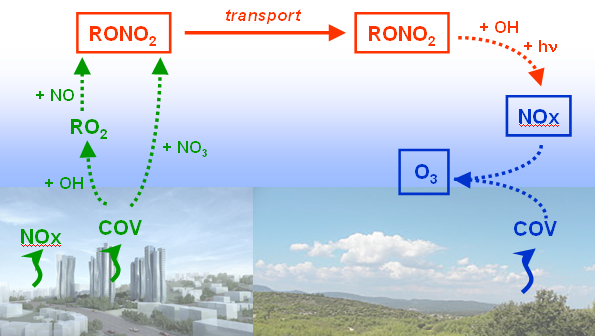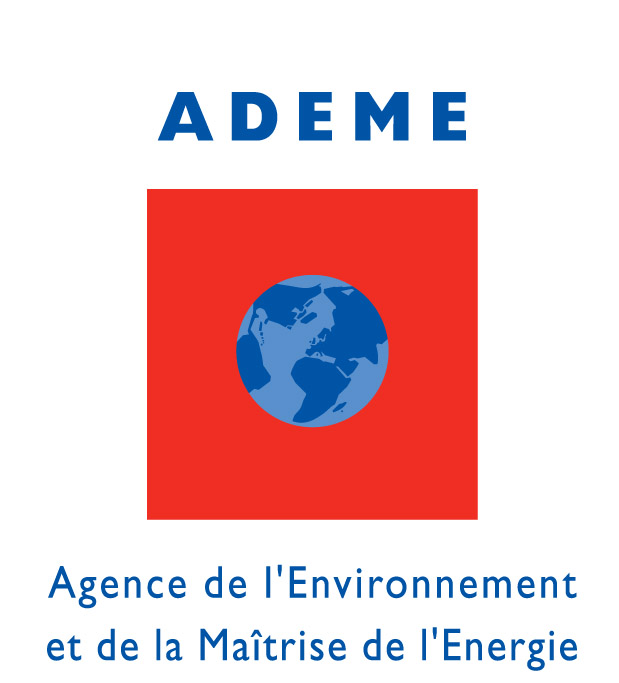NITRATES
Contact: B. Picquet-Varrault
PI : B. Picquet-Varrault
Photochemical pollution is responsible for the degradation of the quality of air through the production of photo-oxidants such as ozone, oxidized secondary compounds potentially irritating or the production of secondary organic particulate matter. The development of these phenomena involves complex interactions between solar radiation, volatile organic compounds and nitrogen oxides.
The intensities of the sources of these precursors are extremely variable in spatial and temporal scales. Development in long distance of this type of pollution depends directly on the transport of reservoir species i.e. species ensuring the preservation of these precursors of their atmospheric degradation before their release from their sources.
Organic nitrates are important species of the tropospheric reactive nitrogen budget. They are formed in NOx rich air by the degradation of hydrocarbons. Since they may have lifetimes of several days or weeks, they may behave as reservoirs for reactive nitrogen by undergoing long-range transport in the free troposphere before decomposing to release NOx in remote regions. . Chemistry-transport models therefore necessarily incorporate elements of chemistry of organic nitrates.
However, knowledge of the sources of organic nitrates (NOx sequestration) and their fates (NOx release) is qualitatively and quantitatively extremely limited. Chemical mechanisms, degradation products yields and kinetic data directly affect the confidence that can be in our estimation of the transport of the pollution.
This project is a consortium grouping of LISA (Créteil)/ICARE (Orléans)/ISM (Bordeaux) to fill the gaps on the understanding of the formation and degradation processes of organic nitrates. It relies on the coordination of experimental approach (flow tube (ICARE), simulations chambers (LISA)), and theoretical calculations (ISM) to provide kinetic and mechanistic data, and of modeling activities (using Gecko-A and CHIMERE, LISA) to evaluate the impact on pollution by integration of these new results.
This project is funded by the program PRIMEQUAL of the Ministry of Ecology, sustainable development and of the sea, in the "long-distance pollution" scope (coord. B. Picquet-Varrault) (2009-2012).

Rôle des nitrates organiques dans le transport longue distance de l’azote réactif


